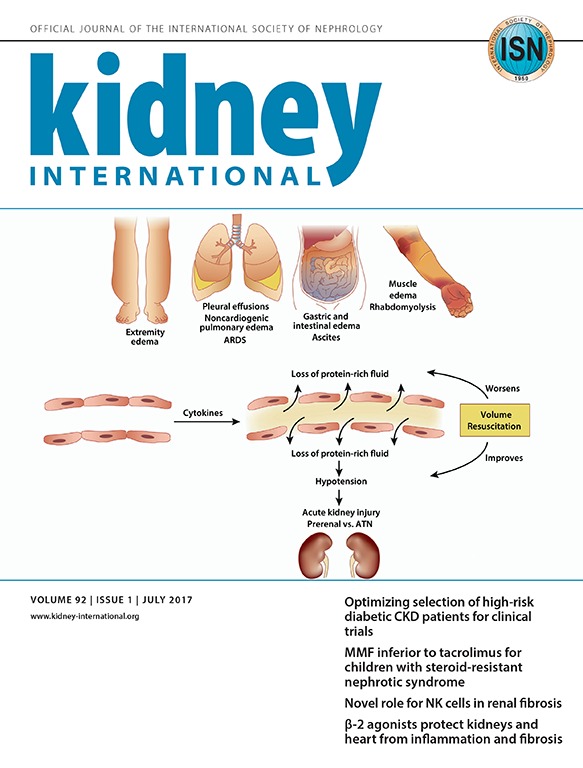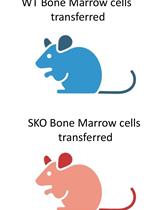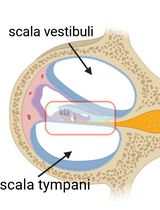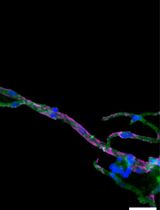- EN - English
- CN - 中文
Identification and Quantitation of Leukocyte Populations in Human Kidney Tissue by Multi-parameter Flow Cytometry
利用多参数流式细胞技术对人肾脏组织中白细胞种群的鉴定与定量分析
发布: 2018年08月20日第8卷第16期 DOI: 10.21769/BioProtoc.2980 浏览次数: 8881
评审: Xiaoyi ZhengHaixia XuAnonymous reviewer(s)
Abstract
Inflammatory immune cells play direct pathological roles in cases of acute kidney injury (AKI) and chronic kidney disease (CKD). However, the identification and characterization of distinct populations of leukocytes in human kidney biopsies have been confounded by the limitations of immunohistochemical (IHC)-based techniques used to detect them. This methodology is not amenable to the combinations of multiple markers necessary to unequivocally define discrete immune cell populations. We have developed a multi-parameter, flow cytometric-based approach that addresses the need for panels of cell-specific markers in the identification of immune cell populations, allowing both the accurate detection and quantitation of leukocyte subpopulations from a single, clinical kidney biopsy specimen. In this approach, fresh human kidney tissue is dissociated into a single cell suspension followed by antibody-labeling and flow cytometric-based acquisition and analysis. This novel technique provides a major step forward in identifying and enumerating immune cell subpopulations in human kidney disease and is a powerful platform to complement traditional histopathological examinations of clinical kidney biopsies.
Keywords: Leukocytes (白细胞)Background
Diseases of the kidney are rising in incidence and prevalence, placing a significant burden on the healthcare community worldwide and significantly affecting patients’ quality of life (World Kidney Day: Chronic Kidney Disease, 2015). Kidney damage can arise from a wide range of insults including infections, ischemia, toxins, hypertension, genetic and metabolic disorders (Imig and Ryan, 2013). The immediate response to insult functionally is acute kidney injury (AKI), a clinical syndrome characterised physiologically by a rapid (hours to days) decrease in kidney function and histomorphologically by infiltration of inflammatory immune cells into the renal tubulointerstitium, the tissue compartment adjoining the tubules of the kidney (Basile et al., 2012). The subsequent biological responses aim to limit ongoing injury and repair damaged tissue. If unresolved, this inflammation may lead to chronic kidney disease (CKD). CKD is defined as a loss in kidney function that persists for at least 3 months in duration and is characterized histomorphologically, regardless of its cause, by tubulointerstitial fibrosis and chronic inflammation (Kawakami et al., 2014). The presence of inflammatory immune cells in human AKI and CKD is suggestive of functional roles in disease progression. However, the identification and enumeration of these CD45+ leukocyte populations in human kidney tissue remain poorly defined.
Until now, the identification of immune cells in human kidney disease has primarily been made using immunohistochemistry (IHC). Numerous IHC-based studies of kidney biopsies report strong associations between the loss of renal function/tubulointerstitial injury and the prominent accumulation of inflammatory immune cell populations of distinct leukocyte lineages, including: T cells (CD3+ cells [Hoffmann et al., 2006]), T helper cells (CD4+ cells [Liu et al., 2012; Pei et al., 2014]), cytotoxic T cells (CD8+ cells [Pei et al., 2014]), B cells (CD19+ or CD20+ cells [Heller et al., 2007]), natural killer (NK) cells (CD16+ or CD56+ cells [Furuichi et al., 2001; Hidalgo et al., 2010; Shin et al., 2015]), monocytes/macrophages (CD14+ cells [Zhou et al., 2010]), dendritic cells (DC) (HLA-DR+ cells [Hart et al., 1981; Markovic-Lipkovski, 1990] or DC-SIGN+ cells [Segerer et al., 2008; Pei et al., 2014]) and granulocytes (neutrophils, basophils, eosinophils; CD15+ or CD16+ cells [Weidner et al., 2004; Segerer et al., 2006]).
However, IHC staining for single antigens is not sufficiently specific to directly identify these immune cell populations, given the broader expression of many of these markers on several leukocyte and non-hematopoietic cell types. For example, single staining for DC-SIGN to identify DC will be non-specific given its co-expression on monocytes/macrophages in kidney tissue (Figel et al., 2011). Similarly, using CD16 or CD56 to identify NK cells will be inadequate, with both markers also expressed on T cells (Markey and MacDonald, 1989; Trinchieri, 1989). Furthermore, IHC-based methods are unable to effectively distinguish expression levels of these antigens, required, for instance, to distinguish subsets of functionally specialized NK cells – CD56bright CD16-/low NK cells and CD56dim CD16+ NK cells. Clearly, a progression to multi-parameter staining methodologies is required to more accurately detect and quantify immune cell populations in human kidney disease.
We have developed a novel protocol for obtaining single cell suspensions from fresh kidney biopsies to allow the identification and enumeration of immune cells subsets via multi-color flow cytometry (Kassianos et al., 2013; Law et al., 2017 and 2018; Muczynski et al., 2018). Biopsy tissue (excess to diagnostic purposes) is obtained with informed patient consent, followed by enzymatic digestion into single cells and finally, antibody labeling for acquisition by flow cytometry. This process enables precision in detecting discrete immune cell populations based on the absence/presence and intensity of multiple markers. This approach also allows differentiation of populations based on cell size (forward scatter; FSC), granularity (side scatter; SSC), cell viability (Near-IR) and absolute immune cell counts (fluorescent counting bead standard). This single platform approach is proving versatile in answering basic research questions in kidney disease and is readily translatable to human diagnostics of the future, where immune cell populations may become prognostic markers for the progressive loss of kidney function.
Materials and Reagents
- Samco Extra Fine-tip polyethylene transfer pipettes (Thermo Fisher Scientific, Fisher ScientificTM, Molecular BioProducts, catalog number: 231 )
- 1.5 ml microcentrifuge tubes (Eppendorf, catalog number: 0030125150 )
- 5 ml polystyrene round-bottom tubes (flow cytometry tubes) (Corning, Falcon®, catalog number: 352008 )
- Flow-Count Fluorospheres (Beckman Coulter, catalog number: 7547053 )
- Aluminum foil
- Hank's balanced salt solution (HBSS + Calcium + Magnesium) (Thermo Fisher Scientific, GibcoTM, catalog number: 14025076 )
- Hank's balanced salt solution (HBSS, no calcium, no magnesium) (Thermo Fisher Scientific, GibcoTM, catalog number: 14175095 )
- Collagenase P (Roche Molecular Systems, catalog number: 11213857001 ) (2 mg/ml stock)
- DNase I (Roche Molecular Systems, catalog number: 11284932001 ) (10 mg/ml stock)
- Trypsin-EDTA (0.05%), phenol red (Thermo Fisher Scientific, GibcoTM, catalog number: 25300054 )
- Sodium Azide (Sigma-Aldrich, catalog number: S2002 )
- Fetal Bovine Serum (FBS) (Thermo Fisher Scientific, GibcoTM, catalog number: 1009141 )
- RPMI 1640 Medium (Thermo Fisher Scientific, GibcoTM, catalog number: 11875119 )
- Bovine Serum Albumin (Sigma-Aldrich, catalog number: A7906-500G )
- Paraformaldehyde (PFA) (Sigma-Aldrich, catalog number: 158127 )
- Phosphate buffered saline (PBS)
- LIVE/DEADTM Fixable Near-IR Dead Cell Stain Kit (Thermo Fisher Scientific, InvitrogenTM, catalog number: L10119 )
- Human TruStain FcXTM (BioLegend, catalog number: 422302 )
- Brilliant Violet 510TM anti-human CD45 Antibody clone HI30 (e.g., BioLegend, catalog number: 304036 )
- Phycoerythrin (PE) Mouse Anti-Human CD19 Antibody clone HIB19 (e.g., BD, catalog number: 555413 )
- PE-CF594 Mouse Anti-Human CD16 clone 3G8 (e.g., BD, catalog number: 562320 )
- Alexa Fluor® 700 anti-human CD14 Antibody clone M5E2 (e.g., BioLegend, catalog number: 301822 )
- Brilliant Violet 605TM anti-human CD4 Antibody clone OKT4 (e.g., BioLegend, catalog number: 317437 )
- Brilliant Violet 650TM anti-human CD3 Antibody clone OKT3 (e.g., BioLegend, catalog number: 317323 )
- FITC anti-human CD8a Antibody clone RPA-T8 (e.g., BioLegend, catalog number: 301006 )
- PerCP/Cy5.5 anti-human CD56 (NCAM) Antibody clone HCD56 (e.g., BioLegend, catalog number: 318322 )
- Brilliant Violet 785TM anti-human HLA-DR Antibody clone L243 (e.g., BioLegend, catalog number: 307642 )
- Digestion solution I (see Recipes)
- Digestion solution II (see Recipes)
- FACS buffer (see Recipes)
- 1% PFA (see Recipes)
Equipment
- Vortex
- Benchtop centrifuge
- Timer
- FACS flow cytometer (BD, model: LSRFortessaTM , 4 laser)
- Conventional cell culture incubator (37 °C/5% CO2)
Software
- FlowJo version 10.1.0 (FlowJo LLC, https://www.flowjo.com)
- BD FACSDivaTM software
Procedure
文章信息
版权信息
© 2018 The Authors; exclusive licensee Bio-protocol LLC.
如何引用
Kildey, K., Law, B. M., Muczynski, K. A., Wilkinson, R., Healy, H. and Kassianos, A. J. (2018). Identification and Quantitation of Leukocyte Populations in Human Kidney Tissue by Multi-parameter Flow Cytometry. Bio-protocol 8(16): e2980. DOI: 10.21769/BioProtoc.2980.
分类
免疫学 > 免疫细胞染色 > 流式细胞术
细胞生物学 > 组织分析 > 组织分离
您对这篇实验方法有问题吗?
在此处发布您的问题,我们将邀请本文作者来回答。同时,我们会将您的问题发布到Bio-protocol Exchange,以便寻求社区成员的帮助。
提问指南
+ 问题描述
写下详细的问题描述,包括所有有助于他人回答您问题的信息(例如实验过程、条件和相关图像等)。
Share
Bluesky
X
Copy link













